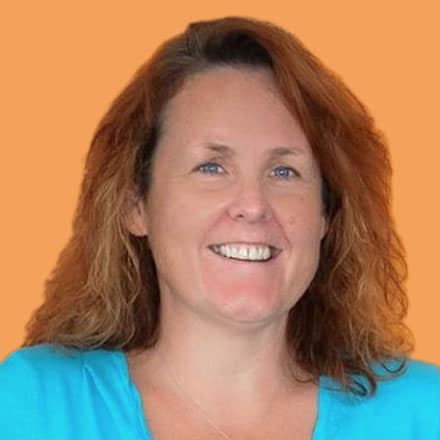Inside Angle
From 3M Health Information Systems
What my son’s broken arm taught me about a Boston hospital’s preparedness during COVID-19
There are cartoons circulating online that show parents begging their children not to get hurt out of fear of going to the hospital. I thought they were funny and never expected this scenario would happen to me. To my surprise and shock, it did!
On a beautiful Sunday evening, my doorbell rang and a neighbor told me that my 11-year-old son was crying nearby. He had fallen from his scooter and was all scraped up. My mom instincts told me that his arm was broken. I got him home and I immediately iced and elevated his arm and gave him some basic pain medication. Even after all my efforts he was still in tremendous amounts of pain. It is hard enough dealing with a broken arm, but in a pandemic, there are tough questions that must be answered: Do I take him to a hospital and risk exposing both of us to COVID-19? Will the treatment of my son’s broken arm lead to something more serious? After weighing my options, I landed on going to an emergency room in Boston that caters to pediatric patients and has orthopedic services. My feelings and fears are shared by many, as numerous news articles have reported patients being hesitant to come to the emergency room even with broken bones.
At the hospital, I dropped my husband and son at the entrance and told them I would meet them in what I presumed was the lobby. I parked the car and entered what I learned was the first check point into the hospital. Fully gowned hospital staff and a security guard met me at the entrance and asked several general questions:
- Do I have a fever?
- Do I have a cough?
- Do I feel fatigue?
- Do I have a headache?
Those are the only four questions I remember from their laminated checklist. After answering, I was allowed to proceed to the security guard where I was asked to take off my mask and use one provided to me. Somehow, I made it through the blockade of medical personnel and hurried to the emergency room where I entered an empty waiting room. I was confused. I had been to this hospital at all hours and had never seen the waiting room vacant. I was met with another check point and a different set of hospital staff, again fully gowned. Before I could ask where my husband and son were, I had to pass another laminated checklist. I was nervous, so I kept answering some questions “yes” instead of “no.” We laughed about my answers and I told them that I was worried about my son. We redid the checklist and I passed. I felt somewhat victorious as I had managed to pass not one but two blockades of hospital personnel. They led me to my son’s room and I was stunned to see my husband and son were actually in a room. Was it possible the hospital had no patients?
The X-ray confirmed that my son had a left radial buckle fracture. The staff worked efficiently as nurses came in and out of the room to check on him and alleviate his pain. I asked the nurses if they were slammed with work, and they responded that it must be a nice day outside as the ED had seen a lot of falls. They were busy, but where were they squirreling away all the patients? It all seemed well orchestrated with very limited contact with staff and no contact with other patients. Registration called my cell phone to get all my demographic and insurance information. I did ask the dreaded question: Had the staff seen COVID-19 patients? After all, we were in the heart of Boston. “Yes,” the nurse responded.
When going to the grocery store feels like a post-apocalyptic experience, I assumed going to a Boston hospital would be the epitome of death and sickness. At the time, COVID-19 cases were soaring and people were dying, and yet the ED waiting room was completely empty. The case numbers and our experience in the ED didn’t seem to match. I wondered how this hospital pulled it all off. Boston hospitals had some practice with the pandemic as we are more than a month into the COVID-19 surge, but it still seemed too seamless for only a month of practice. I wondered, “how did the hospital get this good?”
So, it wasn’t surprising when the Boston Globe ran an extensive article focused on nurses that highlighted experiences similar to mine. I learned this particular hospital has been preparing for this sort of outbreak for at least six years. A biocontainment unit was created in response to the Ebola outbreak. The hospital practiced simulations for years using a program which allowed them to hone their skills in a similar setting prior to the actual event. The organization’s practice and preparation was evident in how they cared for my son in the middle of the public health emergency, as well as how they minimized our risk of exposure to COVID-19. I have been relaying this fact to all the moms in my community so if they have to seek treatment for their children they can do so with the assurance that this hospital has taken steps to protect and care for their pediatric patients.
Going to the emergency room with a broken arm turned out to be a better experience than shopping for toilet paper at the grocery store. Practice does make perfect; at least it put one worried mom’s mind at ease. My anxiety was alleviated, and my son had the best care with minimal exposure to COVID-19. I made the right choice and now my son is on the mend and so am I!
Jean Jones is a coding analyst at 3M Health Information Systems.
Visit the 3M HIS COVID-19 resource page.
During a pandemic, information is gathered, studied, and published rapidly without the usual processes of review. Our understanding is rapidly evolving and what we understand today will change over time. Definitive studies will be published long after the fact. We share our thoughts and expertise based on currently available information.


